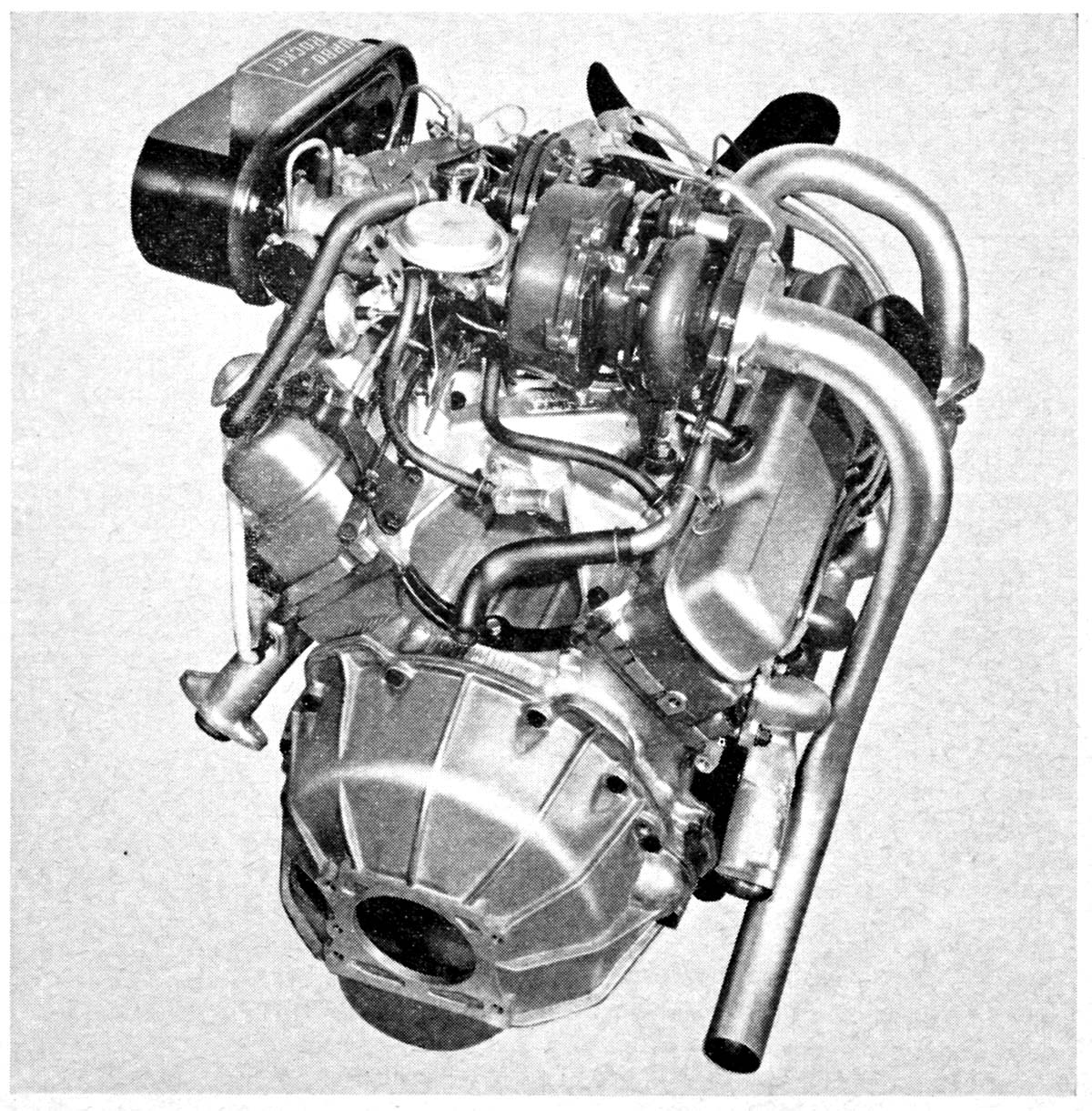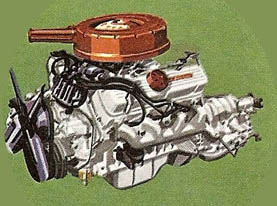The Rockette
From 1961-1963, Oldsmobile manufactured its own version of the co-designed with Buick, all-aluminum 215 engine for the Olds F-85. Known variously as the “Rockette” and “Turbo-Jetfire” or “Turbo Rocket by Oldsmobile”, to differentiate it from the 371 and 394 Rocket V8 manufactured since 1949. It was a compact, lightweight V8 engine measuring 28″ long, 26″ wide, and 27″ high, with a dry weight of only 320 lb.
The Oldsmobile engine was very similar to the Buick engine, but not identical: it had larger wedge-shaped combustion chambers with flat-topped pistons, six bolts rather than five per cylinder head, and slightly larger intake valves. The valves were actuated by shaft-mounted rocker arms like the Buick and Pontiac versions, but the shafts and rockers were unique to Oldsmobile.
With an 8.75:1 compression ratio and a 2-barrel carburetor, the Olds 215 had the same rated 155 hp @ 4800 rpm, as the Buick 215, with 220 ft-lbs of torque at 2400 rpm. With a 4-barrel carburetor and 10.25:1 compression, the Olds 215 made 185 HP @ 4800 rpm and 230 ft-lbs at 3200 rpm when equipped with a manual transmission. With a 4-barrel carburetor and 10.75:1 compression, the Olds 215 made 195 HP @ 4800 rpm and 235 ft-lbs of torque at 3200 rpm with an automatic.
The Buick/Olds 215 V8 went on to become the well known Rover V8, which remained in production until 2004 in the Range Rover. The Rover V8 utilized the Buick-style pistons, heads, and valve train gear.
The Oldsmobile engine block formed the basis of the Repco 3-liter engine used by Brabham to win the 1966 and 1967 Formula One world championships. The early Repco engines produced up to 300 BHP and featured SOHC cylinder heads. The 1967 and later versions of the Repco engine had proprietary engine blocks.
In the mid-1980s, hot rodders discovered the 215 could be stretched to as much as 305 cu. in. using the Buick Cast iron 300 V8 crankshaft, new cylinder sleeves, and an assortment of non-GM parts. Using the 5-liter Rover block and crankshaft, a maximum displacement of 317.8 cu. in. is possible.
The Turbo Jetfire
In 1962 and 1963 Oldsmobile built a turbocharged version of the 215. The small-diameter Garrett T5 turbocharger produced a maximum of 5 psi boost at 2200 rpm. The engine had 10.25:1 compression and a single-barrel carburetor. It was rated at 215 HP @ 4600 rpm and 300 ft-lbs at 3200 rpm. The high compression ratio would generally create a serious problem with detonation on hard throttle applications, which led Olds to use a novel water-injection system that sprayed small amounts of distilled water and methyl alcohol (dubbed “Turbo-Rocket Fluid”) into the combustion chambers to cool the intake charge. If the fluid reservoir was empty, a complex double-float and valve assembly in the Turbo-Rocket Fluid path would set a second butterfly (positioned between the throttle butterfly and the turbocharger) into the closed position, limiting the amount of boost pressure.
The turbocharger was offered only in the Jetfire model, and only 9,607 were sold in two model years, and some of this production was converted by dealers to the conventional four-barrel carbureted form.













